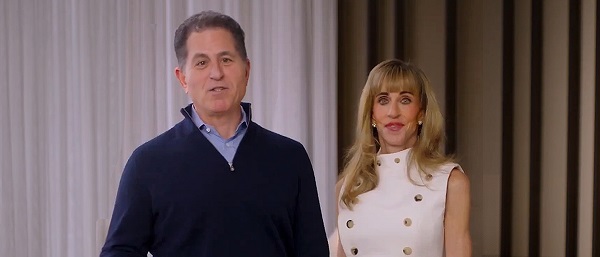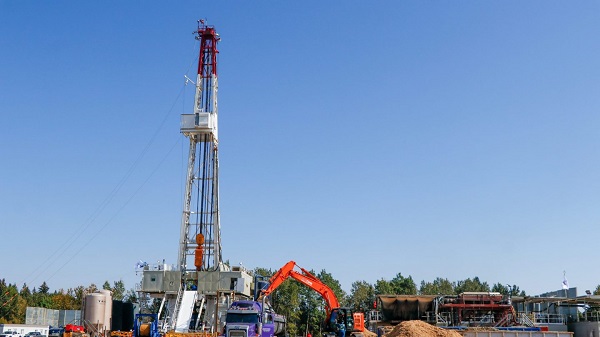COVID-19
Preston Manning stepping away from National Citizen’s Inquiry to focus on the Alberta Public Health review

From the National Citizen’s Inquiry
The National Citizen’s Inquiry (NCI) – a citizen-led inquiry into Canada’s response to COVID-19 – is finalizing plans to hold hearings across the country. With two of five commissioners now in place, the inquiry has booked its first two events – in Atlantic Canada and Central Canada.
Across the country, we are seeing more and more clear signals that Canadians are not only ready to ask the hard questions about how our governments reacted to this pandemic, but also require the answers.
Nation-wide concern
Another Liberal minister has said the quiet part out loud. Former Finance Minister Bill Morneau joined his one-time colleagues Joel Lightbound, Nathaniel Erskine-Smith, Marcus Powlowski, John McKay and Yves Robillard in expressing dismay that the Trudeau Liberals used vaccine mandates as a political wedge issue, an approach that “stigmatizes and divides people” as Lightbound put it.
In fact, after two years of vaccine distribution, the state broadcaster this week also published one of its first articles chronicling widespread vaccine injuries. The article acknowledged that those suffering from adverse effects also deal with “silence” and “stigma” as a result of the overly politicized tone set by Ottawa.
In Ontario, 164 former health care workers rallied to let the public know that, while the provincial health care system buckles under immense pressure and nurses are shipped in from other parts of Canada, there are hundreds of workers that were terminated because of vaccination mandates – and to the surprise of most – they are still not permitted to resume their careers.
In Alberta, Premier Danielle Smith has commissioned a Public Health Emergencies Governance Review Panel which will “review the legislation that guided Alberta’s response to COVID-19 and recommend changes to improve the handling of future public health emergencies for Albertans.”
NCI Spokesperson
On that note, Preston Manning will be stepping away from his role as spokesperson for the NCI to chair the Alberta review. The NCI welcomes this positive initiative by Premier Smith and believes the people of Alberta will be well-served by the appointment of Mr. Manning as Chair. Taking over for Manning is acclaimed investigative journalist Trish Wood. Wood worked for 10 years on CBC’s Emmy Award-winning Fifth Estate before exposing the heartbreaking stories of Iraq War veterans in What Was Asked of Us and later pioneering the modern renaissance of true-crime storytelling. This experience has allowed her to hone the kind of unapologetic critical thinking and investigative skills that she will bring to bear in this role.
Hearing Details
Plans for the Inquiry’s in-person hearings – supplemented by virtual participation – are now being finalized. The first hearings will be in Atlantic Canada e.g. Truro/Nova Scotia, March 16,17,18 and Montreal/Quebec, 22, 23, and 24 of March.
Additionally, the Inquiry has appointed its first two commissioners. They are Bernard Massie and Ken Drysdale.
Invitations will soon be sent to government officials at all levels across the country. These individuals will be invited to provide their perspectives and reflect on the decisions that were made.
Invitations are also extended to experts in the areas of economics; health care; mental and physical wellbeing; constitutional expertise; learning; and any other area significantly affected by pandemic response at any level. The Inquiry is also welcoming non-experts with personal stories that will help illuminate any unarticulated and overlooked shortcomings in the government responses. As demonstrated in the article reference above, there are many Canadians who feel silenced and stigmatized.
Take the example of Christian and Margarita
Immigrants from Mexico, they chose to start a life and a family here in Canada. Christian holds a PhD and was a lecturer at a prominent Canadian university. His wife was a program manager for a regional health authority.
After soberly considering their risk profile against the available data, as well as suspecting that the mRNA vaccination was incompatible with aspects of their faith, they chose to wait.
And in their situation, we see the unfortunate cascading effects of these poorly considered policies, developed in bureaucratic silos.
Christian and his wife – who worked from home, incidentally – were both put on indefinite administrative leave by their employers. Both streams of household income effectively removed.
And because of the Federal government’s policies, they were also deemed ineligible for any employment insurance.
Being immigrants, they also did not have family around them. In fact, their main community connections were from a church they attended. Unfortunately, they were also no longer allowed to attend worship services because of the imposition of the vaccine passport program by the provincial government.
At the time this happened, Christian and Margarita were also living on an island. Federal travel mandates left them effectively stranded.
In the span of a month, these highly skilled individuals – who had made Canada their new home – lost all income; were disqualified from any social assistance; lost their primary community support system; and could not even get on a plane to leave.
Now Christian and Margarita are in the process of returning to Mexico, where they have more confidence that the government will leave them in peace.
It is stories like this that will not be heard at an internal meeting between government officials and senior bureaucrats. It is stories like this that demand a citizen’s inquiry.
About the National Citizen’s Inquiry
NCI is a citizen-led and citizen-funded initiative that is completely independent from government. In early 2023, the NCI will hear from Canadians and experts and investigate governments’ COVID-19 policies in a fair and impartial manner. The NCI’s purpose is to listen, to learn, and to recommend. What went right? What went wrong? How can Canadians and our governments better react to national crises in the future in a manner that balances the interests of all members of our society?
COVID-19
Canadian Health Department funds study to determine effects of COVID lockdowns on children

From LifeSiteNews
The commissioned study will assess the impact on kids’ mental well-being of COVID lockdowns and ‘remote’ school classes that banned outdoor play and in-person learning.
Canada’s Department of Health has commissioned research to study the impact of outdoor play on kids’ mental well-being in light of COVID lockdowns and “remote” school classes that, for a time, banned outdoor play and in-person learning throughout most of the nation.
In a notice to consultants titled “Systematic Literature Reviews And Meta Analyses Supporting Two Projects On Children’s Health And Covid-19,” the Department of Health admitted that “Exposure to green space has been consistently associated with protective effects on children’s physical and mental health.”
A final report, which is due in 2026, will provide “Health Canada with a comprehensive assessment of current evidence, identify key knowledge gaps and inform surveillance and policy planning for future pandemics and other public health emergencies.”
Bruce Squires, president of McMaster Children’s Hospital of Hamilton, Ontario, noted in 2022 that “Canada’s children and youth have borne the brunt” of COVID lockdowns.
From about March 2020 to mid-2022, most of Canada was under various COVID-19 mandates and lockdowns, including mask mandates, at the local, provincial, and federal levels. Schools were shut down, parks were closed, and most kids’ sports were cancelled.
Mandatory facemask polices were common in Canada and all over the world for years during the COVID crisis despite over 170 studies showing they were not effective in stopping the spread of COVID and were, in fact, harmful, especially to children.
In October 2021, then-Prime Minister Justin Trudeau announced unprecedented COVID-19 jab mandates for all federal workers and those in the transportation sector, saying the un-jabbed would no longer be able to travel by air, boat, or train, both domestically and internationally.
As reported by LifeSiteNews, a new report released by the Justice Centre for Constitutional Freedoms (JCCF) raised alarm bells over the “harms caused” by COVID-19 lockdowns and injections imposed by various levels of government as well as a rise in unexplained deaths and bloated COVID-19 death statistics.
Indeed, a recent study showed that COVID masking policies left children less able to differentiate people’s emotions behind facial expressions.
COVID vaccine mandates and lockdowns, which came from provincial governments with the support of the federal government, split Canadian society.
COVID-19
Ontario student appeals ruling that dismissed religious objection to abortion-tainted COVID shot

From LifeSiteNews
An Ontario Tech University student is seeking judicial review after the Human Rights Tribunal of Ontario ruled his beliefs did not qualify as protected ‘creed.’
An Ontario university student who was punished for refusing the COVID shot is contesting a tribunal ruling that rejected his religious objection to the vaccine.
In a November 28 press release, the Justice Centre for Constitutional Freedoms (JCCF) announced that a judicial review has been filed on behalf of former Ontario Tech University student Philip Anisimov after his religious objection to the COVID vaccine was dismissed by an Ontario court.
“Mr. Anisimov’s objection to the Covid vaccine was deeply rooted in his religious commitment to live according to biblical precepts,” Constitutional lawyer Hatim Kheir declared. “He hopes the Divisional Court will clarify that his religious objection was protected by the Human Rights Code and entitled to protection.”
In 2021, Ontario mandated that all students in the province show proof of vaccination unless they had an exemption or agreed to attend a COVID jab education session boasting about the shots. The third option was not available at Ontario Tech University, as schools could choose whether or not they would offer such a program to students.
Anisimov had requested an exemption from the experimental, abortion-tainted COVID shots on religious grounds but was denied and deregistered from his courses.
He was then forced to spend an entire extra year to complete his studies. According to his lawyers, Ontario Tech University’s decision to not approve his COVID jab exemption request “not only disrupted his career plans but also violated his right to be free from discrimination on the basis of religion, as protected by the Ontario Human Rights Code.”
The university’s refusal to honor his exemption prompted Anisimov to take legal action in April with help of the JCCF. However, the Human Rights Tribunal of Ontario rejected his religious objection, arguing that it was not protected as a “creed” under the Ontario Human Rights Code.
Now, Anisimov is appealing the ruling, hoping that his case will serve as a precedent for justice for students who were discriminated against for refusing the abortion-tainted vaccine.
“My hope is that this case helps set an important precedent and encourages Canadians to reflect on the direction our society is taking,” he explained. “My trust is that God does all things for the good of those who love Him, who are called by His purposes.”
COVID vaccine mandates, as well as lockdowns that came from provincial governments with the support of the federal government, split Canadian society. The mRNA shots have been linked to a multitude of negative and often severe side effects in children.
Beyond health concerns, many Canadians, especially Catholics, opposed the vaccines on moral grounds because of their link to fetal cell lines derived from the tissue of aborted babies.
-

 Business21 hours ago
Business21 hours agoWhy Does Canada “Lead” the World in Funding Racist Indoctrination?
-

 Focal Points2 days ago
Focal Points2 days agoPharma Bombshell: President Trump Orders Complete Childhood Vaccine Schedule Review
-

 Automotive1 day ago
Automotive1 day agoTrump Deals Biden’s EV Dreams A Death Blow
-

 Alberta2 days ago
Alberta2 days agoA Memorandum of Understanding that no Canadian can understand
-

 Automotive1 day ago
Automotive1 day agoCanada’s EV Mandate Is Running On Empty
-

 Censorship Industrial Complex2 days ago
Censorship Industrial Complex2 days agoFrances Widdowson’s Arrest Should Alarm Every Canadian
-

 Alberta2 days ago
Alberta2 days agoPremier Smith: Canadians support agreement between Alberta and Ottawa and the major economic opportunities it could unlock for the benefit of all
-

 Media21 hours ago
Media21 hours agoThey know they are lying, we know they are lying and they know we know but the lies continue









